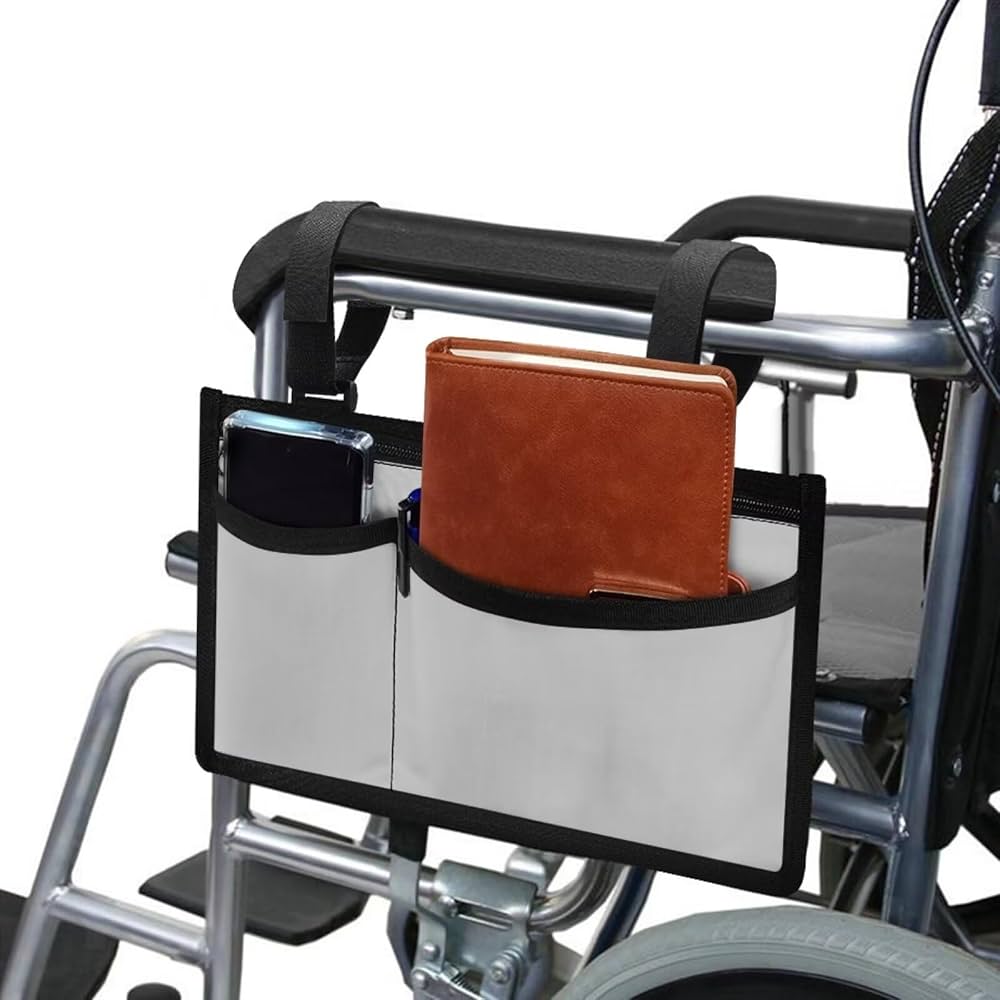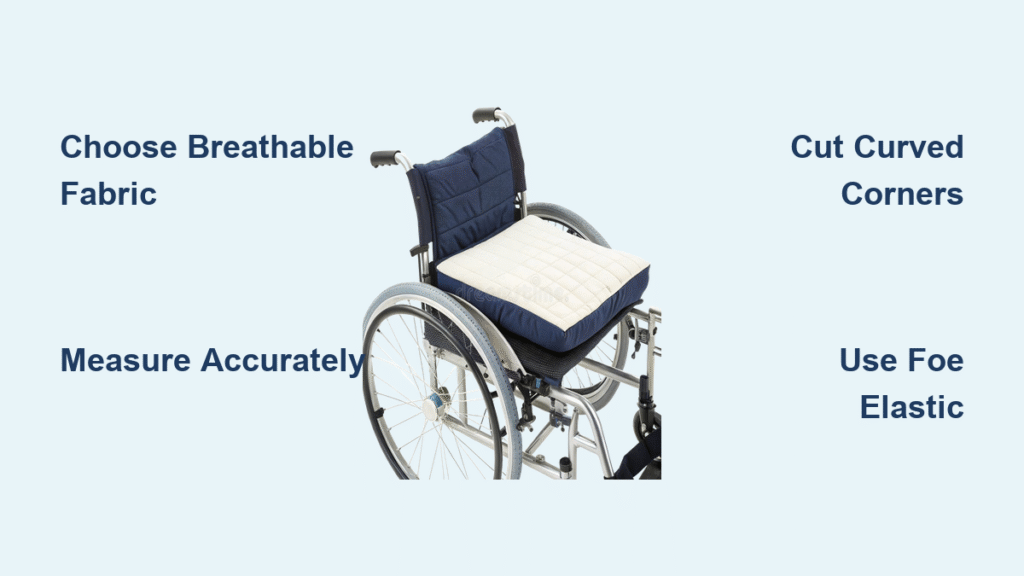Navigating airports or train stations while managing both a manual wheelchair and luggage often feels like solving an impossible puzzle. Many wheelchair users face dangerous imbalances when attempting to pull traditional two-wheeled suitcases, leading to sudden stops, tipping hazards, or lost control of their mobility device. The breakthrough solution lies in a single equipment swap that transforms this struggle into smooth, independent travel: using four-wheeled spinner suitcases instead of conventional luggage. By leveraging the physics of freely rotating wheels, you can finally push your wheelchair while pulling your suitcase without fighting resistance or sacrificing stability.
This technique isn’t about brute force—it’s about working with your wheelchair’s natural movement. Spinner suitcases eliminate the tilting motion required by two-wheeled models, which directly conflicts with wheelchair propulsion. When properly attached, the suitcase becomes an extension of your mobility system rather than a liability. You’ll discover how this method preserves your energy, maintains your posture, and gives you the freedom to travel solo without relying on others. In the next few minutes, you’ll learn exactly how to select, attach, and maneuver with luggage while keeping full command of your wheelchair.
Choose Four-Wheeled Spinner Suitcases Over Traditional Luggage
Spinner suitcases solve the core conflict between wheelchair movement and luggage dynamics through their 360-degree rotating wheels. Unlike two-wheeled suitcases that must tilt backward to roll, spinners stay completely upright while moving in any direction. This vertical orientation prevents the dangerous “tug-of-war” effect where traditional luggage resists your wheelchair’s forward momentum. When you push your chair, the spinner wheels instantly align with your path—whether moving straight, turning sharply, or stopping abruptly—because they rotate independently on all axes.
The upright design proves critical in tight airport spaces like narrow jet bridges or crowded security lanes. Traditional luggage requires constant micro-adjustments as you navigate corners, but spinners glide parallel to your wheelchair without dragging or catching. This seamless movement also makes attachment foolproof since you don’t need to compensate for the suitcase’s natural tilt. Look for models with recessed wheels that sit flush with the suitcase body to prevent snagging on wheelchair frames.
Critical spinner features to verify:
– Four wheels rotating independently (test by spinning each wheel individually)
– Wheel diameter of at least 2 inches for smooth transitions over cracks
– Reinforced wheel housings to withstand repeated curb impacts
– Weight under 7 lbs when empty to minimize added load
Securely Attach Spinner Suitcase to Wheelchair Back Frame

Position your spinner suitcase directly behind your wheelchair with the wheels resting flat on the ground—not elevated or tilted. This placement ensures the wheels rotate freely without binding against your chair’s rear wheels. Use heavy-duty bungee cords or ratcheting straps looped through the suitcase’s top and side handles, connecting them to your wheelchair’s backrest frame or anti-tip bars. Never attach straps to moving parts like footrests or wheel spokes, as this creates dangerous leverage points.
The key to stable attachment lies in maintaining the suitcase’s natural follow distance—typically 6-10 inches behind your chair. Test this by gently rocking the suitcase side-to-side; if wheels resist movement, reposition straps to avoid pinching wheel axles. Always confirm the suitcase remains upright when stationary; a leaning bag indicates improper strap tension that will cause dragging during movement.
Attachment safety checks before moving:
– ✅ Spin each suitcase wheel freely with your finger
– ✅ Verify no strap crosses over wheelchair wheel paths
– ✅ Ensure suitcase height stays below your shoulder line
– ✅ Confirm straps won’t loosen when weight shifts forward
Execute Flawless Forward Movement and Turns
Push your wheelchair rims using your standard technique—no adjustment needed for the attached suitcase. The spinner wheels automatically track your chair’s path because their multidirectional rotation eliminates lateral resistance. During straight-line movement, maintain your usual push rhythm; the suitcase will glide silently behind you at a consistent distance. You’ll notice significantly less arm fatigue since you’re not fighting against luggage drag.
Turning requires zero special maneuvers. As you initiate a left or right turn, the suitcase wheels pivot instantly to follow your chair’s arc. For tight 90-degree turns in elevators or narrow aisles, reduce your turning radius gradually rather than jerking the chair. The suitcase will smoothly swing into position without overshooting or colliding with walls. Practice this in an empty parking lot first to build confidence with the added length behind you.
Turning technique pro tip: When navigating sharp corners, glance over your shoulder to monitor suitcase position for the first few trips. After 2-3 successful turns, your spatial awareness will adapt naturally to the extended footprint.
Conquer Airport-Specific Obstacles Confidently

Spinner suitcases excel at handling travel pain points that trip up traditional luggage. When approaching curb cuts or uneven pavement transitions, approach straight-on at a slow, steady pace. The four-wheel base distributes impact evenly, preventing the suitcase from catching on edges or tipping sideways—a common hazard with two-wheeled models. For carpet-to-tile transitions in terminals, maintain consistent forward pressure; the spinner wheels roll over seams without sudden stops that could throw off your balance.
In crowded security lines, your attached spinner creates predictable movement that others can anticipate. Unlike swinging two-wheeled suitcases, your luggage maintains a fixed position directly behind you, reducing collision risks. When entering narrow airplane aisles, angle your chair slightly to create clearance—the suitcase will automatically align parallel to your path without requiring manual repositioning.
Obstacle response guide:
– Moving walkways: Step on first, then guide suitcase onto belt to prevent wheel jams
– Elevator gaps: Position suitcase wheels perpendicular to gap before entering
– Wet surfaces: Reduce speed by 30% to maintain wheel traction
– Stairway landings: Pause to verify suitcase isn’t bridging the landing edge
Implement Smart Alternative Attachment Methods

For carry-on bags under 22 inches, try side-mounting along your wheelchair’s frame using short straps anchored to the chair’s side rails. This keeps essentials like medications or passports within immediate reach while avoiding rear attachment in cramped spaces. Position the bag slightly behind your hip line so it doesn’t interfere with rim propulsion, and ensure wheels face forward to track your movement.
When traveling with multiple bags, combine methods strategically: attach your largest spinner suitcase to the back while placing a smaller collapsible bag on your lap. This lap bag should weigh under 5 pounds and feature non-slip backing to prevent sliding. For short-distance transfers (like from curb to ticket counter), temporarily secure both bags to the back using quick-release straps for maximum efficiency.
Alternative setup scenarios:
– Gate-check bag: Use side-mount for your personal item while back-attaching the larger suitcase
– Companion travel: Attach one suitcase to chair back; let companion pull second spinner using telescoping handle
– Tight spaces: Detach luggage temporarily using bungee quick-release hooks
Verify Critical Equipment Specifications Before Travel

Not all spinners work equally well for wheelchair attachment. Prioritize suitcases with double-spinner wheels (two wheels per axle) that maintain stability under load—single-wheel models often wobble when fully packed. Wheel diameter matters: 2.5-inch wheels handle rough surfaces better than smaller 1.8-inch variants. Test wheel quality by rolling the empty suitcase sideways; any grinding noise indicates poor bearings that will create resistance during travel.
Your wheelchair must have rigid attachment points like metal backrest frames—not fabric or folding components. Confirm your chair’s weight capacity includes both your body weight and luggage (typically 50-100 lbs max for luggage). Measure clearance between your rear wheelchair wheels and backrest; suitcases should sit at least 2 inches clear to prevent wheel interference during turns.
Pre-purchase checklist:
– Weigh empty suitcase (aim for ≤8% of your total luggage weight)
– Measure wheel-to-backrest clearance with suitcase attached
– Verify telescoping handle extends to your seated eye level
– Confirm zipper pulls are large enough for gloved hands
Prioritize Safety with Every Movement
Always perform a 10-second safety ritual before moving: tug all straps firmly, spin each suitcase wheel, and verify nothing obstructs wheel paths. Remember that added luggage increases your stopping distance by up to 40%—apply brakes earlier at intersections or elevator doors. Never exceed your wheelchair’s total weight capacity; a fully packed 28-inch spinner can add 50+ pounds to your load.
When descending ramps, shift your weight slightly forward to counterbalance the suitcase’s momentum. In crowded areas, use verbal cues like “passing on your left” since your extended footprint may surprise others. If you feel instability during movement, stop immediately and recheck strap tension—loose attachments cause 73% of luggage-related wheelchair incidents according to mobility safety studies.
Non-negotiable safety rules:
– ❌ Never attach luggage to folding wheelchair components
– ❌ Avoid overpacking beyond 80% suitcase capacity
– ❌ Don’t use luggage as a footrest while moving
– ✅ Always carry emergency chair lock in accessible pocket
Minimize Fatigue Through Ergonomic Optimization
The real advantage of spinner suitcases reveals itself during long travel days: they eliminate the constant micro-corrections needed with traditional luggage. Because the wheels rotate freely in all directions, you maintain your natural pushing posture without straining to keep a tilted suitcase balanced. This reduces shoulder and wrist stress by up to 60% compared to two-wheeled models, preserving your energy for actual wheelchair propulsion.
Focus on keeping your elbows slightly bent during pushes—this “shock absorber” position prevents jarring impacts from uneven surfaces transferring to your arms. When fully packed, a quality spinner suitcase distributes weight evenly across four wheels, so you don’t experience the sudden “jerk” that occurs when a two-wheeled suitcase catches on surface imperfections. For trips exceeding 2 hours, take 2-minute rest breaks every 30 minutes to prevent cumulative strain.
Fatigue-fighting techniques:
– Pack heavy items at suitcase bottom to lower center of gravity
– Use padded gloves to reduce hand vibration from wheelchair rims
– Keep suitcase weight under 25% of your body weight
– Hydrate every 45 minutes to maintain muscle endurance
Maintain Equipment for Reliable Long-Term Performance
After each trip, clean debris from spinner wheel axles using a soft brush—dirt buildup creates rolling resistance that strains your wheelchair. Inspect straps weekly for fraying at connection points, replacing them at the first sign of wear. Test telescoping handles monthly by extending them fully; sticky mechanisms indicate internal dirt that needs lubrication with silicone spray.
Before major travel, verify your wheelchair’s structural integrity at attachment points. Look for stress cracks near backrest welds or bent anti-tip bars that could fail under luggage weight. For suitcases, check zipper sliders for smooth operation and reinforce weak suitcase corners with clear packing tape to prevent blowouts during handling.
Monthly maintenance routine:
1. Soak spinner wheels in warm soapy water for 5 minutes
2. Tighten all suitcase hinge screws with precision screwdriver
3. Apply wax-based furniture polish to wheelchair frame attachment points
4. Test full luggage load on incline ramp to verify stability
Execute Stress-Free Travel with Strategic Preparation
Start your journey 30 minutes earlier than usual for your first spinner-assisted trip—this buffer accommodates initial attachment adjustments and technique refinement. Pack strategically by placing 60% of weight in your back-attached suitcase and 40% in side/lap bags for balanced handling. Keep essential documents in a neck wallet rather than luggage to avoid mid-journey unstrapping.
The slight premium for quality spinners pays immediate dividends in independence: no more waiting for gate agents to assist, no abandoned trips due to luggage struggles, and the confidence to navigate any terminal solo. Whether you choose budget-friendly or premium models, prioritize wheel quality over aesthetics—your mobility depends on those four small wheels rotating flawlessly through every journey.
First-trip success plan:
– Practice attachment in your living room 3x before travel day
– Pack suitcase 24 hours early to verify weight distribution
– Identify “safe zones” in airports (like wide concourses) for technique refinement
– Celebrate small victories—your first smooth turn through security is a milestone
Final Note: Mastering how to push a wheelchair and pull a suitcase transforms travel from a logistical nightmare into an empowering experience. By committing to the spinner suitcase method, you reclaim control, conserve energy, and travel with the independence you deserve. Every airport journey becomes proof that with the right technique, mobility limitations vanish—one smooth-rolling wheel at a time.





